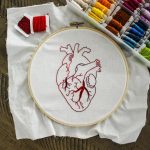As you consider the options for medical compression garments, you're likely weighing the pros and cons of various fabrics. One material that's gained attention in recent years is poly tricot. You might be wondering if it's a suitable choice for compression garments, which require a unique combination of comfort, elasticity, and durability. Poly tricot's smooth texture and resistance to wrinkles are certainly promising, but can it provide the necessary compression and support for medical applications? The answer isn't a simple yes or no – it depends on several factors, which we'll explore in more detail.
Table of Contents
Understanding Poly Tricot Fabric
Poly tricot fabric is commonly used in medical compression garments due to its unique properties, which make it an ideal choice for this specific application.
As you explore the characteristics of poly tricot, you'll discover that it's a type of knit fabric made from polyester fibers. This fabric is known for its smooth, soft, and breathable texture, making it comfortable against the skin.
Poly tricot fabric has a unique weave pattern that provides excellent elasticity and flexibility. This allows the fabric to stretch and conform to the body's shape, making it perfect for compression garments that require a snug fit. Additionally, poly tricot is resistant to wrinkles and shrinkage, ensuring that the fabric retains its shape and size even after repeated washing and wear.
The fabric's durability and ease of care also make it an excellent choice for medical compression garments. The fabric can withstand repeated washing and drying without losing its elasticity or softness. Overall, poly tricot's unique combination of properties makes it an excellent choice for medical compression garments that require comfort, flexibility, and durability.
Medical Compression Garment Requirements
Considering the unique properties of poly tricot fabric, it's clear that this material can meet the stringent requirements of medical compression garments, which demand a specific set of characteristics to ensure effectiveness and patient comfort.
You'll need to consider factors such as breathability, moisture-wicking ability, and durability when selecting a fabric for medical compression garments.
Poly tricot fabric excels in these areas, allowing for airflow and moisture transfer while withstanding repeated wear and washing.
When it comes to medical compression garments, you'll also need to consider the fabric's ability to provide graduated compression.
This means the fabric should be able to apply varying levels of pressure to different areas of the body.
Poly tricot fabric can be engineered to meet this requirement, providing a snug fit that promotes blood flow and reduces swelling.
Additionally, the fabric should be gentle against the skin, reducing the risk of irritation or allergic reactions.
Poly tricot fabric is hypoallergenic and gentle, making it an ideal choice for medical compression garments.
Compression Levels and Poly Tricot
Meeting specific compression levels is crucial for effective compression therapy, and poly tricot fabric can be engineered to provide a range of compression levels, from mild to firm, to address various medical conditions.
You can design poly tricot fabrics to meet specific compression requirements, whether it's for graduated compression stockings, sleeves, or wraps. By adjusting the fabric's thickness, density, and weave, you can achieve the desired compression level.
For example, if you're creating compression garments for patients with mild swelling or circulatory issues, you can use a lighter-weight poly tricot fabric with a lower compression level. On the other hand, if you're designing garments for patients with more severe conditions, such as lymphedema or deep vein thrombosis, you can use a heavier-weight poly tricot fabric with a higher compression level.
Durability and Longevity Testing
With compression garments made from poly tricot fabric engineered to provide specific compression levels, the next step is to ensure these garments can withstand repeated wear and use, which is where durability and longevity testing come into play. You'll want to know how well these garments hold up to the rigors of daily wear, washing, and drying.
| Test Type | Description |
|---|---|
| Abrasion Resistance | Measures the fabric's ability to withstand wear and tear from rubbing and friction. |
| Tensile Strength | Evaluates the fabric's resistance to stretching and breaking. |
| Colorfastness | Assesses the fabric's ability to retain its color after repeated washing and exposure to light. |
When it comes to durability and longevity testing, you'll want to look for results that indicate the poly tricot fabric can withstand the demands of repeated wear and use. This includes withstanding abrasion, maintaining tensile strength, and retaining colorfastness. By putting poly tricot through these tests, you can ensure that your compression garments will provide consistent compression levels and comfort over time. This is crucial for medical compression garments, where consistency and reliability are key.
Poly Tricot Care and Maintenance
To keep your poly tricot compression garments in top condition, you'll need to follow a specific care and maintenance routine that takes into account the unique properties of this fabric.
First, it's essential to wash your garments in cold water, as hot water can cause the fibers to break down and lose their compression properties. You should also avoid using harsh detergents or bleach, as these can damage the fabric and reduce its effectiveness.
When washing your poly tricot garments, it's best to use a mild detergent that's specifically designed for washing delicate or synthetic fabrics. Gently swish the garment around in the water, then let it soak for a few minutes before rinsing thoroughly.
Avoid wringing or twisting the garment, as this can cause it to lose its shape or become misshapen. Instead, gently squeeze out excess water and lay the garment flat to air dry.
Clinical Applications and Studies
In clinical settings, you'll find poly tricot compression garments being used in a variety of applications, from managing chronic conditions like lymphedema and varicose veins to supporting post-operative recovery and wound care. You'll also see them being used to reduce swelling and promote blood flow in patients with deep vein thrombosis (DVT) or chronic venous insufficiency (CVI).
As a healthcare professional, you might be interested to know that poly tricot compression garments have been studied extensively in clinical trials. These studies have shown that poly tricot garments can be just as effective as traditional compression garments made from other materials.
In fact, one study found that poly tricot garments were more comfortable and easier to wear than traditional compression stockings. Another study found that poly tricot garments improved wound healing rates and reduced the risk of complications in patients with chronic wounds.
Frequently Asked Questions
Can Poly Tricot Be Used for Pediatric Compression Garments?
When considering pediatric compression garments, you're likely thinking about soft, breathable fabrics that won't irritate young skin. Poly tricot, a synthetic knit fabric, can be a suitable option for pediatric compression garments, offering a comfortable, flexible fit.
Is Poly Tricot Suitable for Patients With Sensitive Skin?
You're considering poly tricot for patients with sensitive skin. Generally, poly tricot is a soft, breathable fabric, but it's essential to assess individual skin types and potential allergic reactions before recommending its use.
Can Poly Tricot Be Used for Compression Garments for Athletes?
You're considering poly tricot for athletic compression wear. It's a good choice because it provides excellent elasticity, moisture-wicking properties, and breathability, making it suitable for active athletes who need a snug, comfortable fit during exercise.
Does Poly Tricot Meet FDA Regulations for Medical Devices?
You're wondering if poly tricot meets FDA regulations for medical devices. To answer that, you'll need to check if poly tricot complies with FDA guidelines for medical textiles, including biocompatibility and sterility standards.
Can Poly Tricot Be Used for Custom-Made Compression Garments?
You're considering custom-made compression garments, and you wonder if poly tricot is a viable option. You'll need to assess its stretchiness, breathability, and durability to ensure it meets your specific requirements and provides the necessary compression.
- What Gets Coconut Oil Out of Fabric? We Tested 7 Methods - June 29, 2025
- How to Remove Coconut Oil From a Fabric Sofa Without Leaving a Mark - June 29, 2025
- 5 Easy Methods for Getting Coconut Oil Out of Fabric - June 29, 2025







